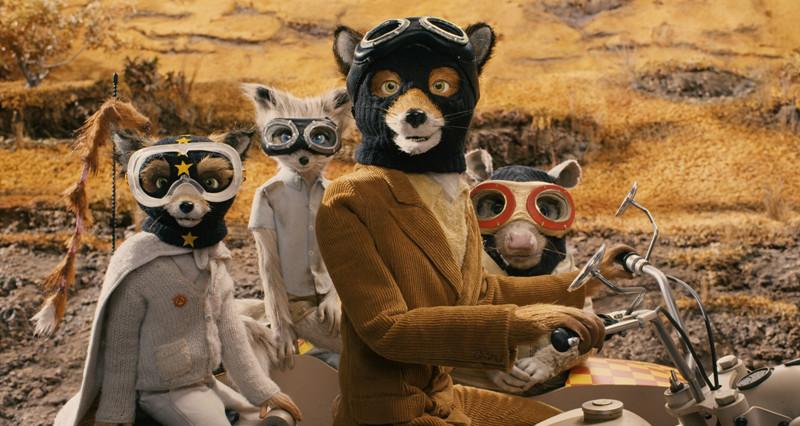Fantastic Mr Fox: Lessons for children
Fantastic Mr Fox: Wes Anderson and Roald Dahl
Wes Anderson’s filmmaking and Roal Dahl’s storytelling are a match made in heaven in Fantastic Mr Fox. There’s something very charming about the aesthetic of Anderson’s films, particularly this stop-motion animation adaptation, and Roald Dahl’s talent for poetic prose writing and characterisation. The joy of this adaptation is that it evokes the structure of the novel form whilst still being firmly a visual medium.
I remember when I watched this film for the first time, one of the things that really stuck with me was the insulting little song about Boggis, Bunce and Bean, because it was exactly how I imagined it. The cadence, the tune, the tone of the song, they all fit my imagined version of it. And then the rest of the film followed suit. The satisfaction that Anderson’s film aesthetics induce is in a similar realm to Dahl’s storytelling, and it’s an important part of the reader or audience’s experience.
But obviously, these are two very different storytelling mediums, and what makes one version satisfying is not necessarily true of the other. In both cases, Mr Fox’s methodical approach to outsmarting the farmers and keeping his family safe and happy gives us a sense of security that the outcome will ultimately be positive. In Dahl’s book, we follow Mr Fox and his children on their digging quests to the various farms, and as Mr Fox sends his children back to their mother one at a time, laden with goodies, the light at the end of the tunnel becomes ever brighter. Anderson’s use of realism and fantasy alongside each other creates a structure we might recognise in our own lives. There are news reports of the events unfolding, interviews with the farmers, house viewings for the Foxes new home, insights into school and home life, amongst other details.
And as we approach the conclusion of the film, there’s the all important theme of community. Mr Fox’s actions have implications not only for himself and his family but for the other creatures who live in the woods who have been forced out by Boggis, Bunce, and Bean’s vendetta. Banding together is the best way to stay safe, the best way to rebuild their lives, and the best way to outsmart the farmers. Ultimately, it’s all a team effort. I think there’s genuinely an important lesson to be learned from Fantastic Mr Fox: how often do we consider why we do things, and whether those things are choices or just our own nature dictating to us? For Dahl’s Mr Fox, it’s the thought of his family and community having to suffer the consequences of his actions which spurs him on to make it right, and create a new life for them all. For Anderson’s Mr Fox, the differences between him and his peers makes them all part of a team, where they can depend on each other and take action together without leaving anyone behind. The story is really a testament to not only our nature but the possibilities when we band together and celebrate our differences.
Now all of this might seem a far cry from a children’s story about a family of foxes living under a tree who one day are forced to flee their home by angry, revenge-bent farmers, but I firmly believe that children’s fiction is one of the best places for big ideas. What classroom could ever be more wonderful than the world inside a story? Who could teach us lessons quite like the ones we read about, and who better to teach those lessons than the characters who lived it? And so whilst this post has been interested in the relationship between Wes Anderson and Roald Dahl as storytellers in their own right, I’d like to bring your awareness to the lessons we might learn from stories that, on their surface, are not necessarily moral tales, but can still teach us something important.




Comments
Post a Comment